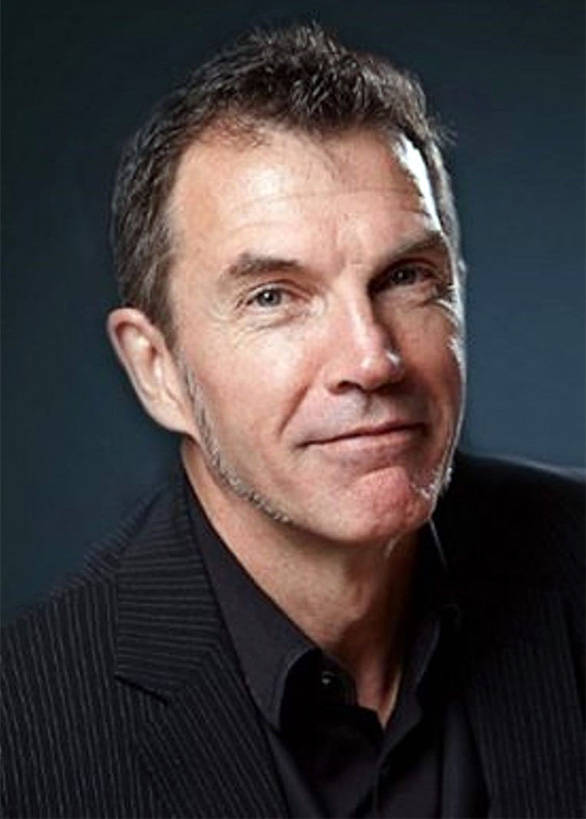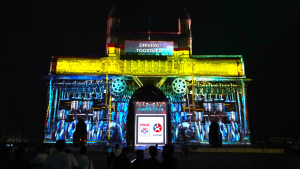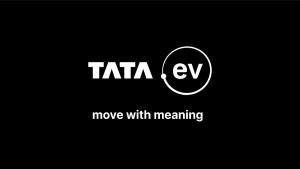Interview: General Motors' Michael Simcoe on the future of vehicle design for Indian market
We recently had a chance to interact with Michael P Simcoe, vice president (Design), GM International Operations at the SIAM 2015 convention held at New Delhi. Michael's design leadership responsibilities include GM's production and advanced studios in Korea, Australia and India. He began to serve as GM's executive director of Asia Pacific Design in 2003. Simcoe led the design strategy and oversaw day-to-day design operations in the region.
Q: When you design a car, do you look at any previous designs? What exactly is your inspiration?
A: Whenever you design something for a company like GM or a brand like Chevrolet, you're designing usually off a base. So yes, you're looking backwards and you're looking forward. You look at customers who bought the previous model. You talk to them, you do research. It gives designers like an anchor, and somewhere else you can see the things that you did and you don't want to do again sometimes. And certainly you can see how the market has reacted to that direction and you obviously want to go forward. So it's like history. You need to know where you've been so you know where to go forward. There are vehicles that we design which are new entries into the market place that have no past. But they're also influenced by all the other vehicles in the portfolio around them.
Q: So you preview them as concepts in auto shows and then put them into production?
A: We don't take everything we do to an auto show as a concept. Concepts are often done purely as blue sky, just to see how people react to a new direction, and may never take it to market. Or sometimes, we are doing something that's all about showing the direction forward for the brand, design or segment. But we don't do that with everything. It's certainly not our job to telegraph to our competition everywhere we're going to go. And that's what you would do by making a concept of every vehicle you're going to go in production with.
Q: So everything that you design doesn't go on to become a concept?
A: It's a hard thing for our designers. They do hundreds and hundreds of sketches. They do lots and lots of scale models and full-size models and what we call out waste rate of design, it's a horrible term but you know, naturally you do a lot of work to get something that you like. Sometimes it's disappointing for designers, but after a short time in the industry, you realise that it's all about the way you spend your money or where you place your bet, and that's the best possible that you could do. So internally, we have a lot of things that the public never sees. We have a lot of things that fall by the wayside as we go from a very coarse direction to very finite one, which is the one we're going to take forward.
Q: So do you approve the final design?
A: No. Every design goes through one set of eyes, Ed Welburn, the vice president of design. So we've got all our studios around the world working, sometimes competitively, on say the next generation of the Beat. That might be a design that was put into competition not just by people here in India, but people in Korea and other studios as well. And ultimately, Ed will choose the design themes that go forward. We will do some research and ultimately it's Ed's call, where we go.
Q: Do you give them a brief before they start designing?
A: Yes. A brief around the strategy and the direction of the brand itself, so that we can make clear where the brand is moving, from a graphic and a service point of view - the design DNA if you like. And we also brief for the market positioning, the type of vehicle and type of customer. Everything in the end is focussed on the customer, because the industry has changed and the customer is now the most important thing. We focus on customer safety and quality.
Q: Do you adopt a global design philosophy or is it region specific?
A: I think if you talk to designers in a regional studio, they say they have an opinion and they're doing the vehicle in their studio and they can apply more. But the reality is that we design vehicles globally now. As I said, we have multiple studios around the world doing competitive work on the one vehicle so that we have different opinions. And each of those studios will bring a regional opinion to the table and by all those studios seeing each other's work, there's a development of a character and likeness around that vehicle. Ultimately, the thing that goes forward is imbued with all of that character.
Q: The cars that we have in India and outside, GM cars for example, are not the same.
A: There are one or two vehicles in countries around the world where they're sometimes specific to the market, but that's getting fewer and fewer. This new Beat that we're talking about, it can't just exist as an Indian vehicle. It will be built here, but ultimately it will be exported. So it can't just be a vehicle for the Indian market. And frankly, for a customer sitting in India, in my opinion, if you gave him a vehicle that you had researched locally and you did everything to make it focussed very very locally, customers can now see the rest of the world. They see it on the internet everyday and they can see a product everywhere else. And the likelihood is that you might miss out on something the customers might like that exists in another market or that exists in a global vehicle versus doing something locally. If you end up designing things locally, manufacturing and engineering locally, the likelihood is you might just suit that one market and we don't do that.
Q: And if I'm not wrong, that's a lot of investment for just one market.
A: Yes. Clearly we're a manufacturing company as well as a design and engineering company. You need scale and you need a view of the world and bring the best of it to the single design.
Q: But don't customers from different markets want different things? For example, I'm a customer and I might want a different interior from what someone in the US wants. Some more chrome perhaps.
A: Yes, you might want a different fabric, a different colour direction, you might want more chrome. But you'll be surprised how similar customer desires are around the world. The more value I can get for my dollar or my rupee, the better. And it's the same everywhere, so don't feel alone. The desire for chrome, the desire for decoration and rich detail is not specific to this market or specific to new customers. It's something you see everywhere.
Q: So these interiors, are they dependant on the customer clinics that you have?
A: Yes, we research the majority of the designs we do. We don't ask customers to tell us in detail everything they want. Because if you're a customer, and I ask you what you want, you don't know the future. So if ask a customer, and I do exactly what that customer is telling me to do, he or she is only going to tell me what they know from the past. What we need to do is understand what customers like and dislike. And we have to take that and internalise it in the designs we do and use it to drive forward. So it's just another piece of the jigsaw of information that we use to create a design going forward.

Q: Does the quality of the interior vary from country to country?
A: No, not substantially, except with respect to the feel or texture. Quality is the same across the world.
Q: What are the different stages of designing a car, based on priority?
A: That's an easy one. We start with the customer, and you understand what the customer wants, and then it's very easy. If you're talking about the physical development of the vehicle, we design around the physical criteria of the customer, the HMI that's the interface and the economics of the vehicle, the packaging for the segment and drive efficiency and then all of the other myriad criteria from legal requirements to manufacturing and safety. It starts with the customer ultimately.
Q: How much of a concept actually makes it on to a production model?
A: That's a hard one. There are things we do with concept vehicles to impress people that are difficult to take into production. But generally, the concept vehicle's influence, in their feel and character, in many ways customers can't see the difference between our concepts and production models.
Q: So at least 60 per cent makes it to the final model?
A: Oh, I won't give you a number.
P Balendran: I'll clarify on that. Normally what happens is that these concepts are placed in car clinics. Then you get the public reaction or feedback.
Q: Which are your favourite designs from Chevy?
A: The ones we haven't done yet. Obviously, designers are very difficult to please. As soon as designers have finished something, they always want to go further, they always want to do more. You can always see the things that you could have done better. But at some point you've got to say, "Hey that one's got to go to the public."
Q: For the 2016/2017 Cruze, was there any Indian involvement in the designing?
A: There was certainly an understanding from the marketing guys here, and the studio here of where the design was going.
Q: Did you have any favourite designers along the way, or someone you idolised?
A: If I was to go back into a period in design in GM that I liked, it would have been the Bill Mitchell era where the brand direction and the clarity of purpose and frankly, GM's dominance in the market, made us absolute design leaders. Everyone was looking at us. Separate to that, there are various smaller coach builders from Italy that I like from the past.
Q: Would we be seeing an aggressive design language for the future design cars in India?
A: Do you like the Malibu? That's one direction forward for the cars.
Q: Is that an indication that it's coming to India?
A: No. You asked me about a design direction.
Q: So you're looking at designing cars in a similar fashion?
A: Well, just think about where we were in the past with the face and the graphics, the style and the design DNA, and how it's progressed. Each new vehicle we do, and the Malibu is one of the latest, you see aggression and a change in style. So they all look like they can exist in a showroom together, because they have to. But each one is more progressive than the last and so we take customers with us.
P Balendran: We need to keep changing. Otherwise youngsters won't buy it because it has to change. Change means development. Development means progress. It has to be an ongoing activity.














